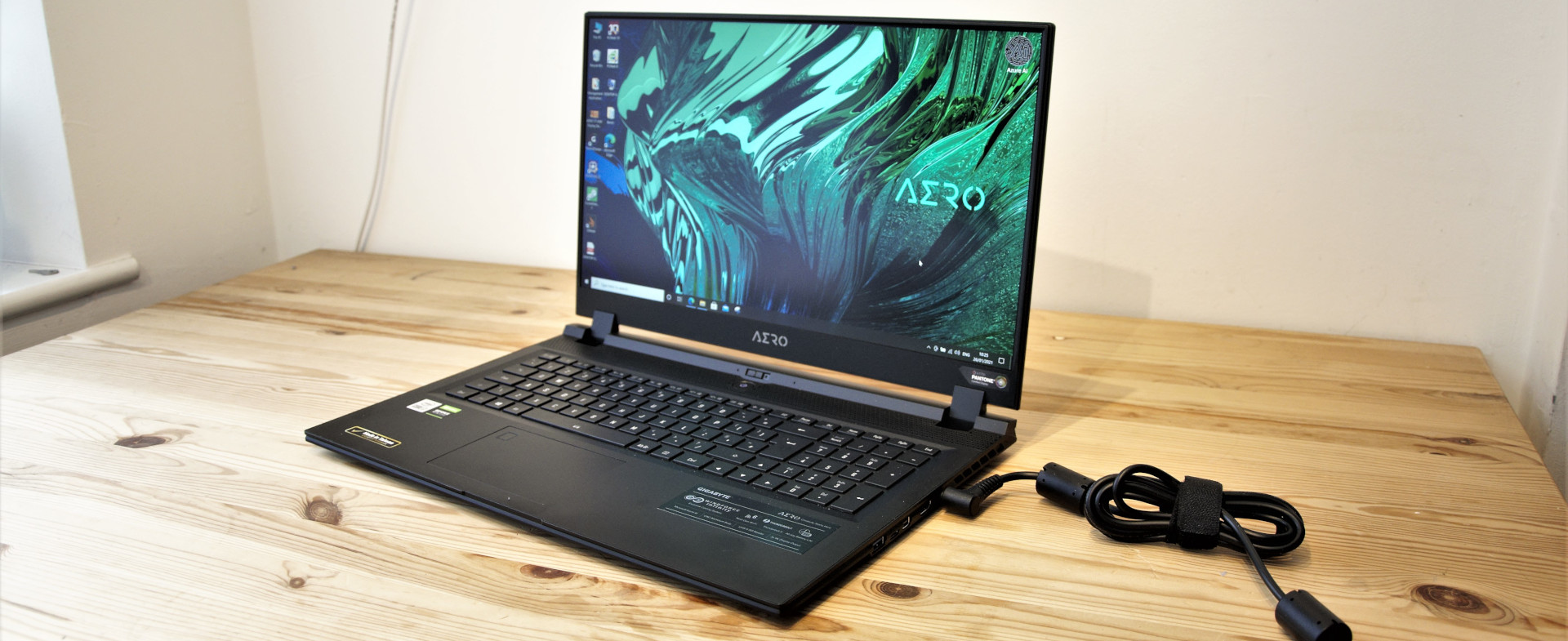TechRadar Verdict
Top-notch performance for professionals and gamers, but it this hardware isn’t a cheap option and the mobile RTX 3070 doesn't have all the power of the discrete desktop card.
Pros
- +
Stunning display
- +
Nvidia 30 Series GPU
- +
Suitable for designers and gamers
Cons
- -
Expensive
- -
Poor placement of the power connection
- -
Lacks Type-A USB 3.2 Gen 2
- -
Only one NVMe port
Why you can trust TechRadar
The Aero 17 HDR first appeared in 2020, and we previously covered the XB release built around an Intel 10th Gen Core i7 CPU, and an Nvidia GeForce RTX 2070 Super GPU.
The hardware we’re covering today, the new XC variant, retains main of the classic features of that design and also sports a 10th generation Intel CPU, but now the latest Nvidia GeForce RTX 3070 video technology.
With the discrete Nvidia GeForce RTX 3080/3070 cards practically impossible to source, is the Gigabyte Aero 17 HDR XC the unsubtle answer to those that want the ultimate in portable performance?
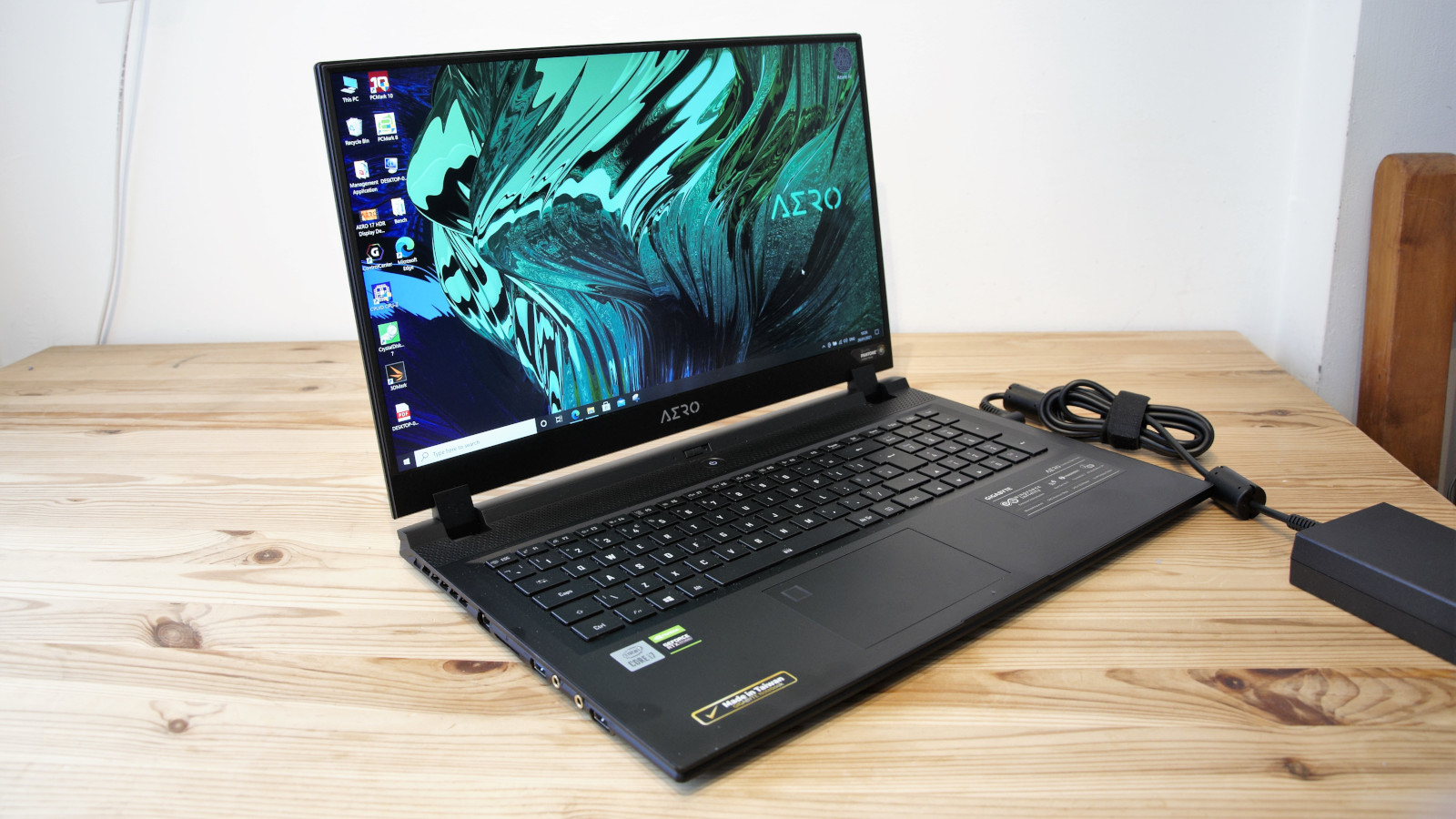
Price and availability
When you choose a screen this resolution combined with a CPU this powerful and a monstrous GPU in a laptop, the cost implications can be dramatic.
The cost of the review hardware has an MSRP of £2699 in the UK, which based on the current exchange translates into around $3,650 in the USA.
We’d expect dollar prices to be lower than that after launch, but you are still unlikely to see much if any change from $3,000 for this specification.
A typical price for the previous XB model of the Aero 17 HDR is around £2,700, making the new design almost identically priced to the hardware it replaces.
Sign up to the TechRadar Pro newsletter to get all the top news, opinion, features and guidance your business needs to succeed!
While still costly, this machine is less than the Alienware Area-51m and ASUS ROG Zephyrus Duo GX550LWS, both with the older RTX 2080 Super video card. Although both brands are likely to release new models featuring the new GPU technology soon.
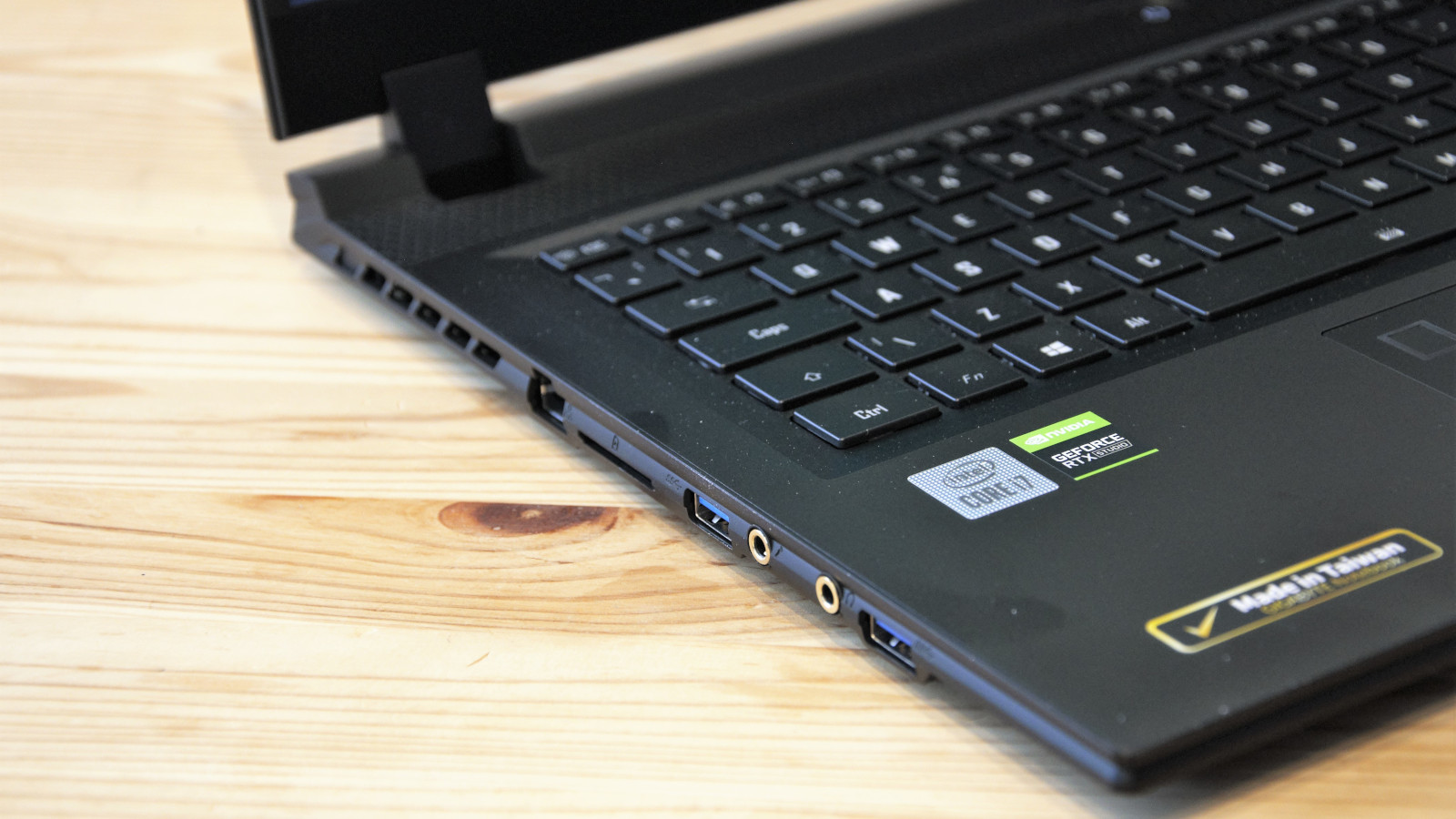
Here is the Gigabyte Aero 17 HDR XC configuration sent to TechRadar for review:
CPU: 2.2GHz Intel Core i7-10870H (8-core, 16MB cache)
Graphics: Intel UHD Graphics 630 and Nvidia Geforce RTX 3070
RAM: 32GB DDR4 (expandable to 64GB)
Screen: 17.3-inches, 3,840 x 2,160 non-touch 60Hz IPS
Storage: 1TB NVMe SSD
Ports: 3x USB 3.2 Gen1 (Type-A), 1x Thunderbolt™ 3 (Type-C), 1x HDMI 2.1,1x mini DP 1.4, 1x Headphone out, 1x Microphone in, 1x UHS-II SD Card Reader, 1x DC-in Jack, 1x RJ-45
LAN: RTL8125-BG REALTEK (2.5G) Ethernet
WLAN : Intel® AX200 Wireless (802.11ax, a/b/g/n/ac/ax compatible), Bluetooth V5.0 + LE
Camera: HD UVC webcam
Battery: Li Polymer 99 Wh
Weight: 2.5 kg / 5.5 lb
Size: 396 x 270 x 21.4 mm (15.6" x 10.6" x 0.84") W x D x H
Design
The external aesthetics haven’t changed noticeably from the previous Aero 17 HDR models. Structurally the ergonomics of the machine were dictated by the widescreen aspect of the 4K X-Rite Pantone Certified panel that stands slightly proud of the main chassis.
As it is significantly wider than deeper, this form factor allowed for a large keyboard with a full numeric pad layout that you wouldn’t normally find on a laptop.
As this is a very high-performance system, it needs more than token cooling, and the whole rear edge between the hinges is an exhaust vent, removing the possibility of any ports existing there.
Therefore, all of the ports have been positioned on the sides, and this machine has plenty of them.
With such a narrow screen bezel the webcam has been relegated to below the screen on the bottom half of the machine, where it can provide those ominous zoom shots of people lit from underneath like they’re in a sixties Hammer horror movie.
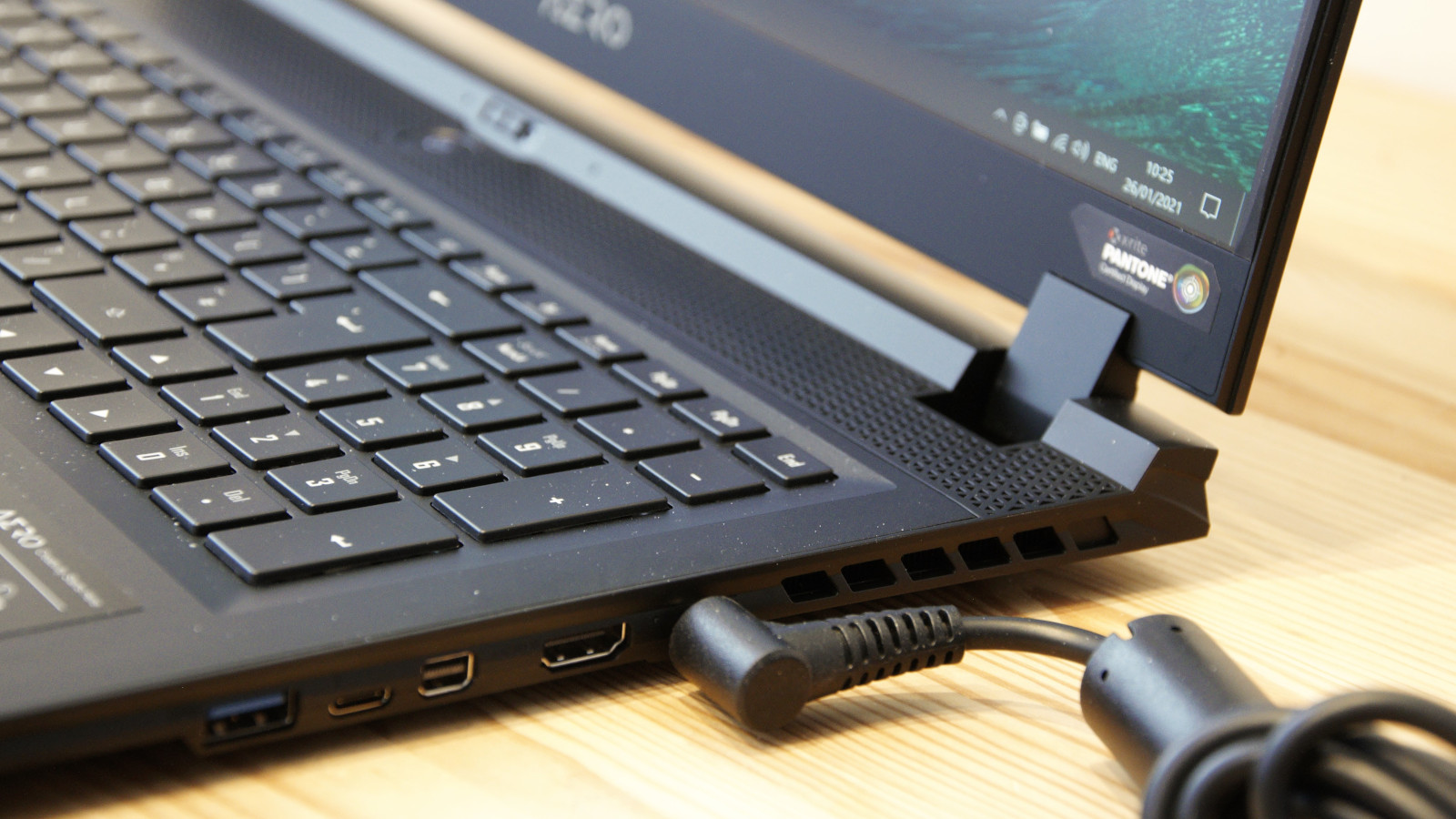
What we liked more was how accessible internally it is, allowing for the memory to be boosted to 64GB and the internal mounted NVMe to be replaced and/or expanded. The underside is removable, and once this is out of the way, all the upgrade opportunities are easily accessible, and most are simple to accomplish.
Our review hardware contained a single 1TB NVMe drive leaving another free. Having two makes it straightforward to add more storage or to clone the drive to a larger capacity unit should that become insufficient.
Or it would if one M.2 slot wasn’t NVMe specification and the other SATA. We’ve seen this before from another manufacturer and complained about it. They should both be NVMe, as making them electronically different but look almost identical is likely to confuse and annoy customers.
That technical faceplant aside, this is an elegant and stylish design that tries hard to avoid looking like a sci-fi movie prop and more like a designer tool.
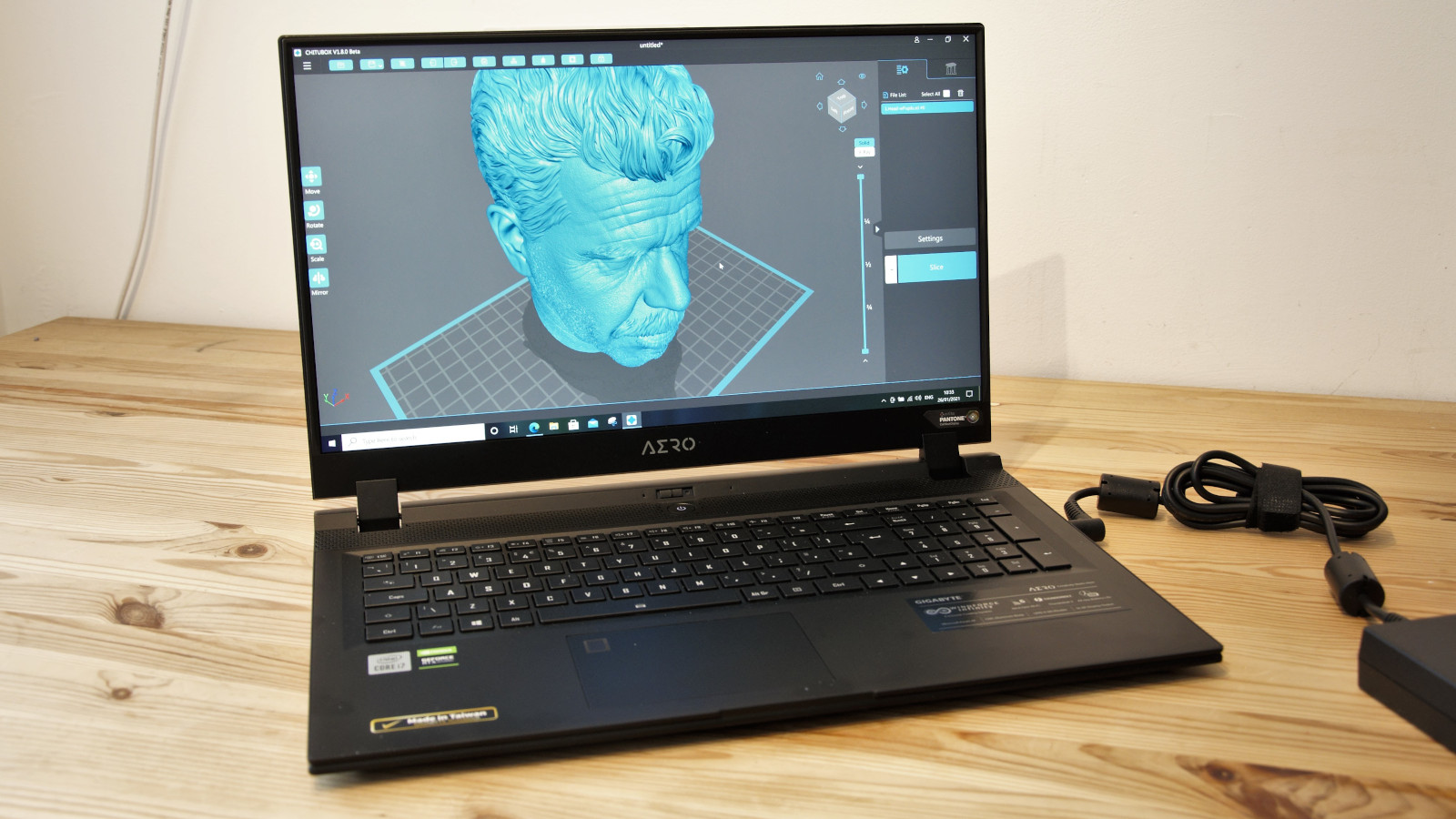
In use
The user experience of the Aero 17 HDR XC is generally an excellent one.
But then it should be good, given this is a computer that would make the most dedicated desktop workstations blush based on raw performance alone.
The screen is bright and gorgeously saturated, and the 4K resolution makes it perfect for anyone working with big images or complex CAD designs. Gigabyte makes the most of it by factory calibrating each one before it leaves the production facility, and it undoubtedly justifies its Pantone certification.
Equally, the keyboard is exceptionally nice to work on, as the width is much closer to a desktop input and transitioning between this and our usual systems proved very easy.
The trackpad is overly sensitive for our sausage-like digits, but it can be adjusted, and it is a decent size.
We’ve only two very minor complaints about the XC, and they’re things that were wrong in the previous releases that have not yet been addressed.
The first of these is the horrible placement of the power connector near the middle of the right-hand edge. This position is precisely where most right-handed users will want to operate their mouse, unfortunately.
The power cables do have an L-shaped connector on it, but having it closer to the screen end of the side would have been more preferable.
Our second issue is the USB ports, or rather than all the type-A ones on this machine are only Gen 1. Why?
The chipset should have sufficient PCIe lanes to provide at least one Gen 2 port, if not make them all the higher specification. Balancing this somewhat is a single Thunderbolt 3 port that can double as a USB 3.2 Gen 2 port for those with Type-C peripherals.
That port could be especially useful for those with a Thunderbolt docking station or high-performance external drives. Thunderbolt 4 might have been a nice upgrade, but alas it didn’t make it into this design.
Mark is an expert on 3D printers, drones and phones. He also covers storage, including SSDs, NAS drives and portable hard drives. He started writing in 1986 and has contributed to MicroMart, PC Format, 3D World, among others.
